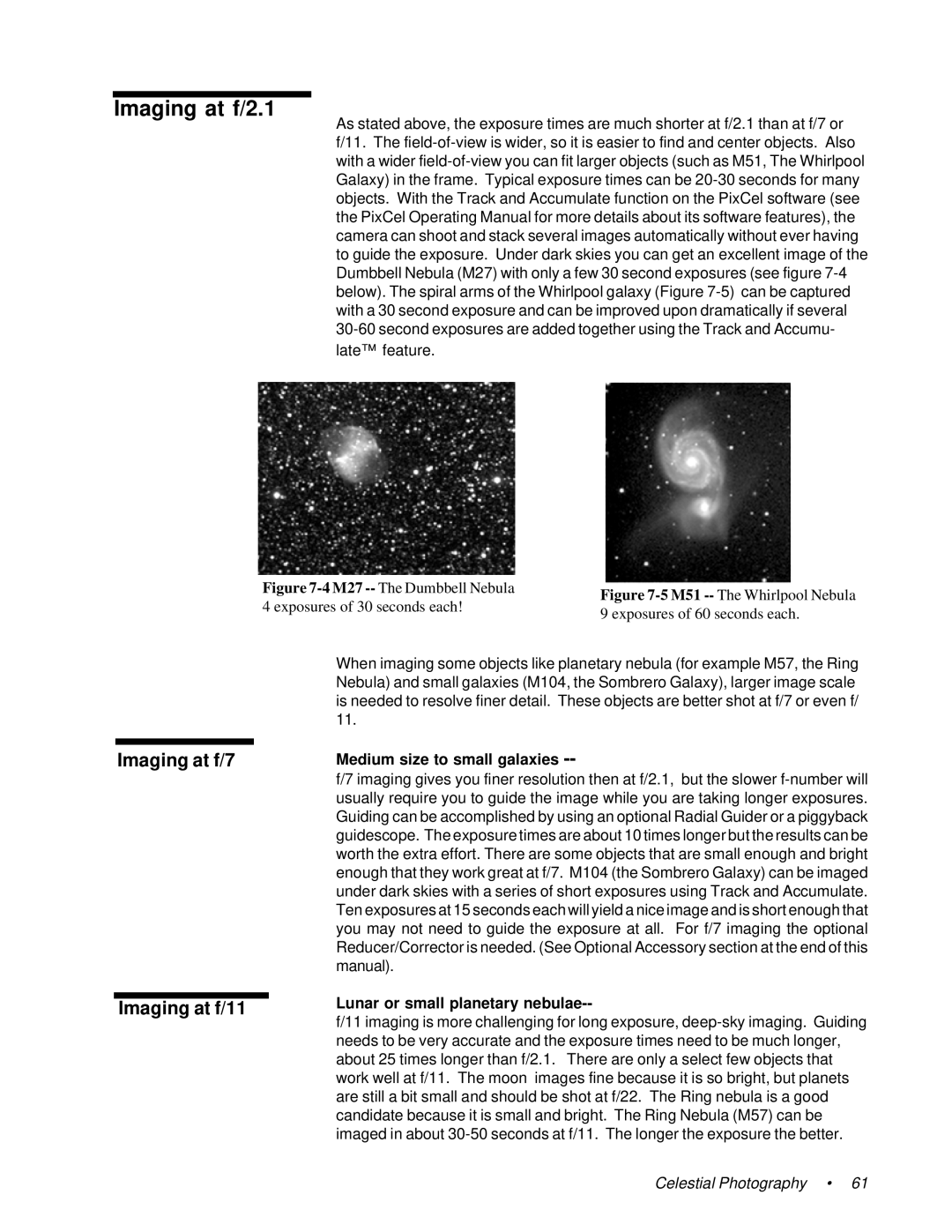
Imaging at f/2.1
As stated above, the exposure times are much shorter at f/2.1 than at f/7 or f/11. The field-of-view is wider, so it is easier to find and center objects. Also with a wider field-of-view you can fit larger objects (such as M51, The Whirlpool Galaxy) in the frame. Typical exposure times can be 20-30 seconds for many objects. With the Track and Accumulate function on the PixCel software (see the PixCel Operating Manual for more details about its software features), the camera can shoot and stack several images automatically without ever having to guide the exposure. Under dark skies you can get an excellent image of the Dumbbell Nebula (M27) with only a few 30 second exposures (see figure 7-4 below). The spiral arms of the Whirlpool galaxy (Figure 7-5) can be captured with a 30 second exposure and can be improved upon dramatically if several 30-60 second exposures are added together using the Track and Accumu- late™ feature.
| Figure 7-4 M27 --The Dumbbell Nebula | Figure 7-5 M51 --The Whirlpool Nebula |
| 4 exposures of 30 seconds each! |
| 9 exposures of 60 seconds each. |
| |
| When imaging some objects like planetary nebula (for example M57, the Ring |
| Nebula) and small galaxies (M104, the Sombrero Galaxy), larger image scale |
| is needed to resolve finer detail. These objects are better shot at f/7 or even f/ |
| 11. | |
| Medium size to small galaxies -- | |
| |
Imaging at f/7 | |
Imaging at f/11
f/7 imaging gives you finer resolution then at f/2.1, but the slower f-number will usually require you to guide the image while you are taking longer exposures. Guiding can be accomplished by using an optional Radial Guider or a piggyback guidescope. The exposure times are about 10 times longer but the results can be worth the extra effort. There are some objects that are small enough and bright enough that they work great at f/7. M104 (the Sombrero Galaxy) can be imaged under dark skies with a series of short exposures using Track and Accumulate. Ten exposures at 15 seconds each will yield a nice image and is short enough that you may not need to guide the exposure at all. For f/7 imaging the optional Reducer/Corrector is needed. (See Optional Accessory section at the end of this manual).
Lunar or small planetary nebulae--
f/11 imaging is more challenging for long exposure, deep-sky imaging. Guiding needs to be very accurate and the exposure times need to be much longer, about 25 times longer than f/2.1. There are only a select few objects that work well at f/11. The moon images fine because it is so bright, but planets are still a bit small and should be shot at f/22. The Ring nebula is a good candidate because it is small and bright. The Ring Nebula (M57) can be imaged in about 30-50 seconds at f/11. The longer the exposure the better.
Celestial Photography • 61

